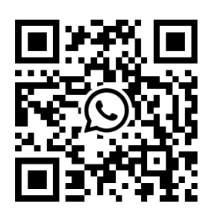How Can Foreign Trade Professionals Conduct Market Demand Research? This Guide Has You Covered!

Whether you’re new to the trade industry or a seasoned export professional, understanding the demand in your target market is key to success. This knowledge forms the basis for creating marketing strategies, developing new clients, and enhancing product competitiveness. But how can trade professionals effectively conduct market demand research? Here’s a detailed breakdown.
Why Should You Conduct Market Research?
Identify Market Opportunities: Research allows you to discover which products or services have a strong demand in the target market, helping you seize opportunities.
Mitigate Market Risks: Understanding market needs can help you avoid potential risks, such as launching products that don’t align with customer preferences or entering a saturated market.
Refine Product Positioning: By understanding customer needs and how competitors position their products, you can better position your own offerings to enhance competitiveness.
How to Conduct Market Research Effectively?
1. Define Your Research Objectives
Before starting market research, it’s crucial to define your goals. This will determine the methods and tools you’ll use. Common objectives include:
- Analyzing customer demand for a specific product or service.
- Understanding customer buying behavior and decision-making processes.
- Evaluating potential competitors and their strengths.
- Identifying new market opportunities or niches.
For example, if you want to assess the popularity of a certain product in a target market, your research goal might be to understand the demand intensity and customer preferences for that product.
2. Choose the Right Research Methods
The method you choose for market research should align with your goals and available resources. Here are some common methods:
Surveys: Useful for gathering large amounts of data quickly. Online platforms like Google Forms or SurveyMonkey can help collect feedback efficiently.
In-depth Interviews: Ideal for gaining deeper insights into customer needs and perceptions. Face-to-face or video interviews with key clients can reveal more detailed information.
Social Media Research: Platforms like LinkedIn and Facebook allow you to engage directly with customers and get real-time feedback, making it easier to spot trends and shifts in demand.
3. Design Effective Research Tools
If you opt for surveys, the quality of your questionnaire will directly impact the accuracy of the data you collect. Consider the following when designing surveys:
Clear Questions: Make sure every question is direct and easy to understand.
Varied Question Types: Use a mix of multiple-choice, open-ended, and scale questions to gather a broad range of insights.
Avoid Leading Questions: Keep your questions neutral to ensure that respondents provide genuine answers without being influenced.
For instance, if you want to know customers' preferences for a new model of headphones, ask, “What features do you prioritize when choosing headphones?” rather than “Do you like our new noise-canceling headphones?”
Data Collection and Analysis
Use Online Survey Platforms: Tools like Google Forms or SurveyMonkey can automatically compile and organize survey data, helping you quickly identify trends.
Leverage Social Media: Engage with potential clients through LinkedIn by sharing surveys or directly asking for their feedback on specific products.
Utilize Industry Reports and Data Platforms: Access detailed market analysis reports through industry databases or trade data platforms like custom data sources. These can provide insights into trends, transaction volumes, and competitor activities.
For instance, using Tradeindata, you can observe market trends over time, analyze the transaction volume of competitors, and find potential gaps where your products can fit in.
Steps for Data Analysis
Data Cleaning: Remove incomplete or irrelevant responses to ensure accurate analysis. For example, filter out surveys that lack key information.
Quantitative Analysis: Analyze numerical data such as purchasing frequencies and market share using tools like Excel to identify market trends.
Qualitative Analysis: Summarize insights from interviews to extract key customer needs and pain points, providing direction for product improvement.
Writing a Market Demand Analysis Report
Once you’ve analyzed the data, compile it into a report that can guide future decisions. The report can include:
Market Overview: A brief description of the market size, growth trends, and overall characteristics of the target market.
Customer Needs Analysis: A detailed look into customer preferences, behaviors, and purchasing habits, offering a clearer understanding of the target audience.
Competitive Environment: An assessment of competitors, including their product positioning, pricing strategies, and market share, to identify your unique strengths.
Opportunities and Challenges: Highlight potential opportunities in the market and any challenges that may arise, offering insights for future strategy development.
Sometimes, trade professionals may also keep these findings in a more informal format for personal reference, making it easier to adjust strategies quickly based on new insights. With the right research methods and data analysis, you can find your own space in the market.
 3
3
 Open WhatsApp and scan
Open WhatsApp and scan
 The data of this company is currently unavailable
The data of this company is currently unavailable


